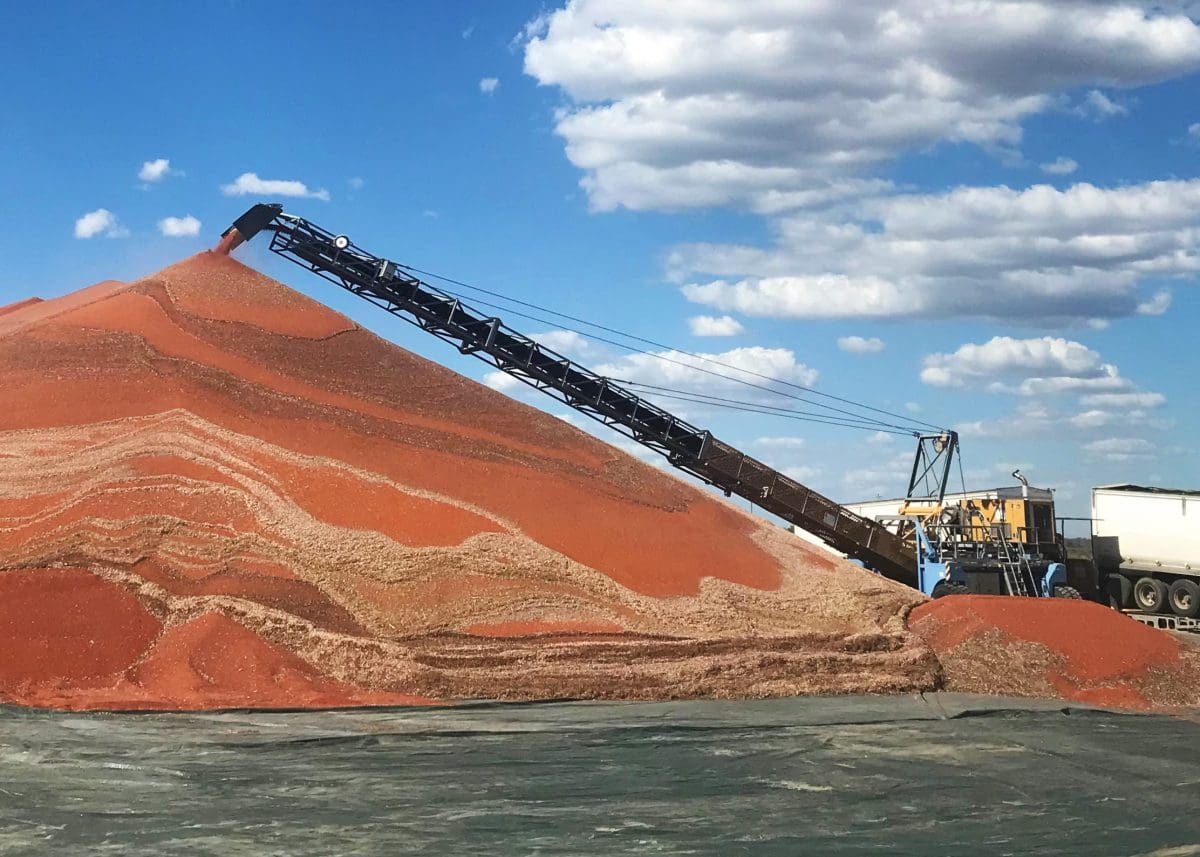
Sorghum deliveries stopped last month after a lengthy rain delay, but receivals prior to and since have allowed exports to continue. Photo: GrainCorp
HARVEST of eastern Australia’s sorghum crop is near completion following a run of fine weather which has allowed ground and grain to dry to workable levels in most areas.
While Central Queensland (CQ) is often still harvesting at this time of year due to its late-summer planting window, southern Queensland and northern New South Wales are normally finish harvesting in May.
Slowing the process up this year was rain in May, which dropped 100-250 millimetres of rain on crops at the point of harvest.
It means growers from the Liverpool Plains to the CQ highlands are still trying to harvest the last of their sorghum, and some are only a few weeks out from planting their next crop.
Sorghum harvested pre-rain was largely of excellent quality and high yields, and got the export program off to a strong and timely start.
However, roughly one third of the Queensland and NSW crop has been downgraded due to sprouting caused by rain on ripe grain.
This has diverted many of the late crops into the domestic market, primarily for poultry feed.
In its quarterly Australian Crop Report released June 7, ABARES forecast Queensland’s sorghum crop at 1.8 million tonnes (Mt) from 452,000ha, and the NSW crop at 952,000t from 170,000ha.
The 2.7Mt crop is almost double the 1.5Mt crop grown in 2020-21, and the second-biggest on record behind only the 3.8Mt crop of 2007-08.
ABARES is forecasting the 2022-23 crop at 1.9Mt over 592,000ha, and planting is expected to start next month.
ABARES estimates exports from the current Australian crop at 1.8Mt, up 8 per cent on the previous year’s 1.7Mt shipped.
Australian Bureau of Statistics data indicates China is the destination for the vast majority of Australian sorghum exports, and shipping stems show this is set to continue.
While some late crops are making top-grade specs, sprouting caused by rain is downgrading most loads to SOR2 or below.
Damp grain thwarts progress
Nutrien Ag Solutions Emerald branch manager Darren Young said he estimated the sorghum harvest in CQ’s Central Highlands was around 80pc complete.
“There’s a bit over at Dysart still to come off, and a lot of what we’re seeing now is shot and sprung,” Mr Young said.
Many early harvested crops in CQ’s northern reaches including the Kilcummin district managed to escape the May rain, and Mr Young said yields of 2.5-3t/ha have been the norm.
SOR2 is being received at some depots, and appears destined for export after blending with top-grade sorghum.
Iker Ag Consulting director Jamie Iker said unacceptably high moisture was preventing a number of CQ growers from completing their sorghum harvest.
“Moisture is letting a lot of guys down; some are getting into the drier stuff that’s got some sprouting, but it needs to be maximum 13.5pc moisture to deliver, and most are still 14-14.5pc,” Mr Iker said.
“If they’ve got on-farm storage, they can dry it in silos, but with the yields being probably better than what we’ve got storage for, there’s not much room for that.”
Mr Iker said yields have mostly been around 2-3t/ha.
“Some have gone a helluva lot more, and some have been a helluva lot less.
“Quality is a real mixed bag too; some are scraping in with Sorghum 1, some is Sorghum 2, and some is Sorghum X.”
Where testweights have been low and sprouting high, some growers have opted to feed crops off to cattle rather than harvest them, particularly are some are stretched for time and labour as they try to finish their winter-crop planting.
“That’s the worst-case scenario, and there’s not a lot of that going on.”
Wheat planting advances
While wheat planting is occurring a few weeks later than ideal because of last month’s rain delay, Mr Iker said crops were shaping up well.
“Wheat started off beautifully, and it’s probably the best start we’ve seen in near-on a decade with the early crop.”
“I think the bulk of the wheat is going to be a fair bit later…probably a couple of weeks behind on where it would normally be.”
Chickpeas will be sown into early July.
“If you go later than that, yield potential drops, so most guys are sticking to paddocks low in nitrogen or the grassier ones for chickpeas this year.”
“We’re heavily chickpea orientated up here because of chickpeas’ ability to be deep sown, and that’s been alleviated this year with the rain at planting time.
All sorghum grades in demand
AgForce grains president and Western Downs grower Brendan Taylor said the sorghum harvest on the Downs was not finished but should be in coming weeks if dry weather prevails.
“Some are still going on sorghum, some are finished, and some are too wet to get back into harvest.
“The ground is slow to dry out because of the short days and the moisture that’s still in the soil.”
Growers are also harvesting mungbeans, most of which are going straight to container packers for grading, and some are picking the last of their cotton too.
Once they can get sorghum to acceptable moisture levels, they are selling for cash.
“Sorghum X is trading at a fairly big discount to Sorghum 1, and chook farms seem to be taking it.”
The delivered price for SORX is around $280-$285 per tonne, roughly $100 below top-grade sorghum, which is still being delivered to Queensland and Newcastle ports for bulk shipment.



HAVE YOUR SAY